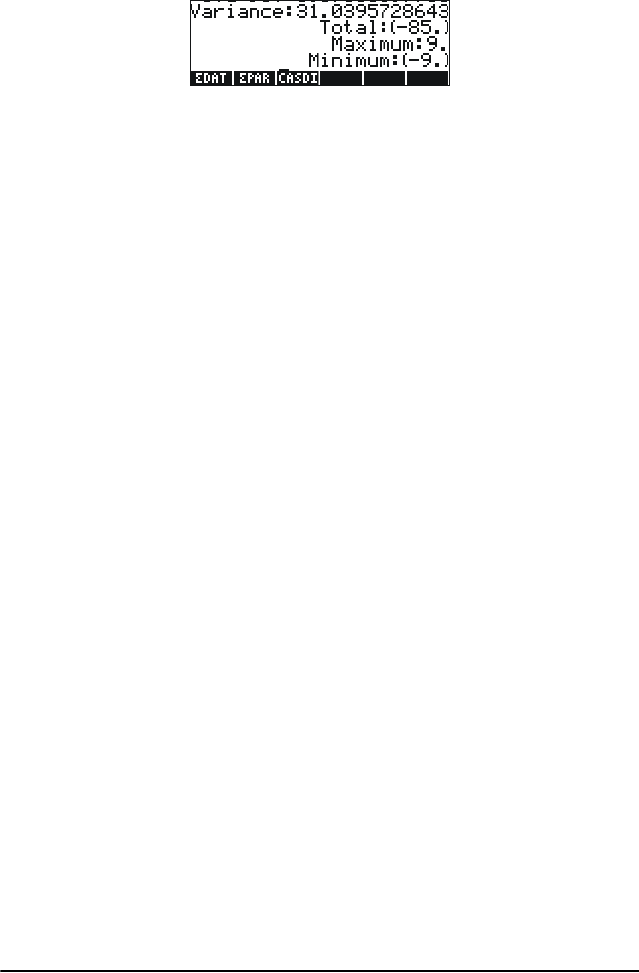
Page 16-4
ΣDAT, by using function STOΣ (see example above). Next, obtain single-
variable information using:
‚Ù @@@OK@@@. The results are:
This information indicates that our data ranges from -9 to 9. To produce a
frequency distribution we will use the interval (-8, 8) dividing it into 8 bins
of width 2 each.
• Select the program 2. Frequencies.. by using ‚Ù˜ @@@OK@@@.
The data is already loaded in ΣDAT, and the option Col should hold the
value 1 since we have only one column in ΣDAT.
• Change X-Min to -8, Bin Count to 8, and Bin Width to 2, then press
@@@OK@@@.
Using the RPN mode, the results are shown in the stack as a column vector
in stack level 2, and a row vector of two components in stack level 1. The
vector in stack level 1 is the number of outliers outside of the interval where
the frequency count was performed. For this case, I get the values [14. 8.]
indicating that there are, in the ΣDAT vector, 14 values smaller than -8 and
8 larger than 8.
•Press ƒ to drop the vector of outliers from the stack. The remaining
result is the frequency count of data.
The bins for this frequency distribution will be: -8 to -6, -6 to -4, …, 4 to 6,
and 6 to 8, i.e., 8 of them, with the frequencies in the column vector in the
stack, namely (for this case):
23, 22, 22, 17, 26, 15, 20, 33.
This means that there are 23 values in the bin [-8,-6], 22 in [-6,-4], 22 in [-
4,-2], 17 in [-2,0], 26 in [0,2], 15 in [2,4], 20 in [4,6], and 33 in [6,8].
You can also check that adding all these values plus the outliers, 14 and 8,
show above, you will get the total number of elements in the sample,
namely, 200.
SG49A.book Page 4 Friday, September 16, 2005 1:31 PM


















